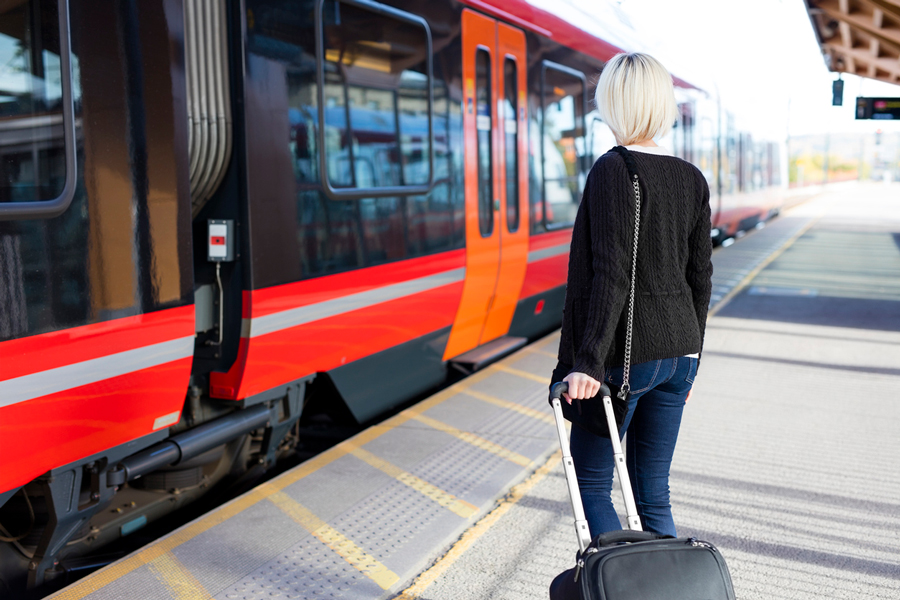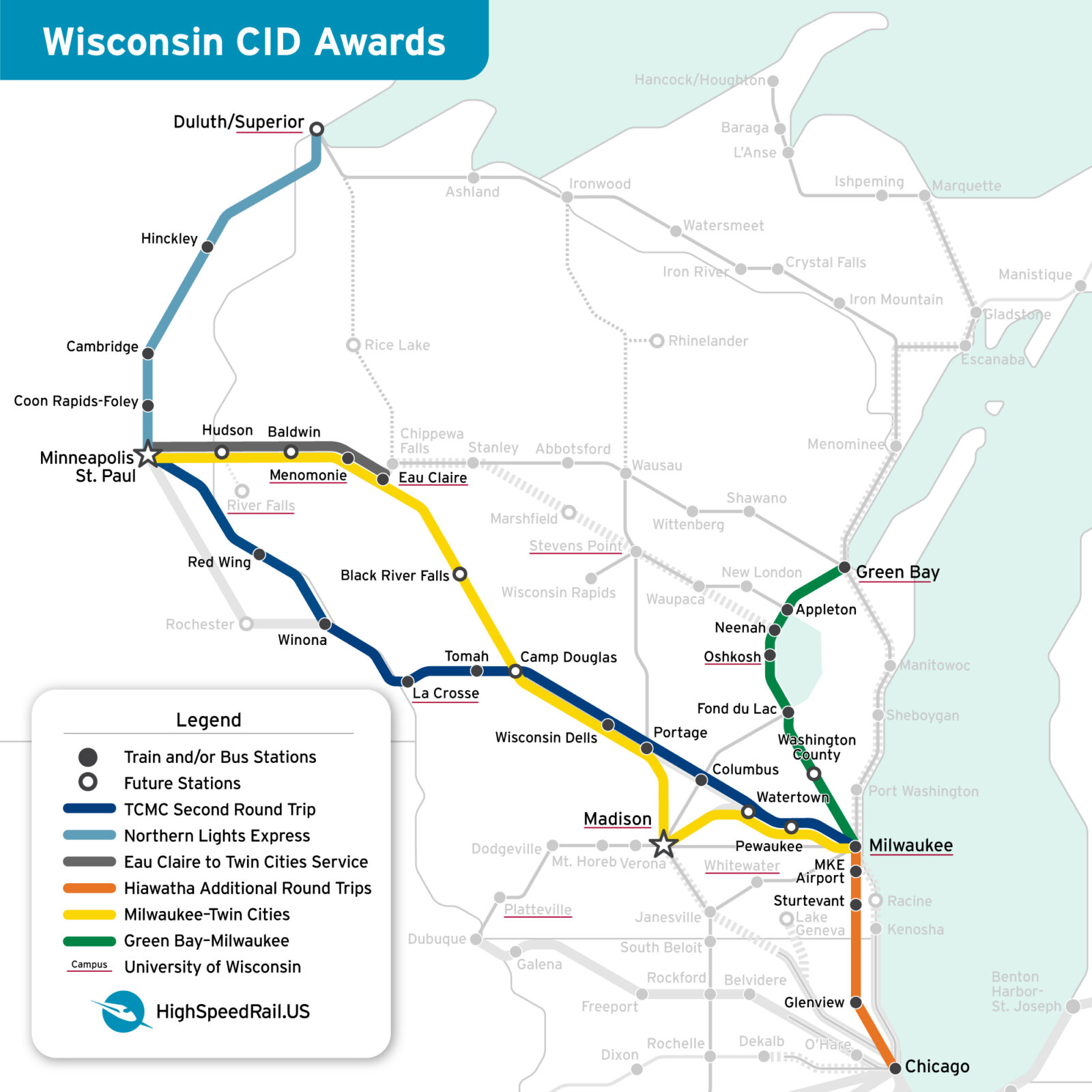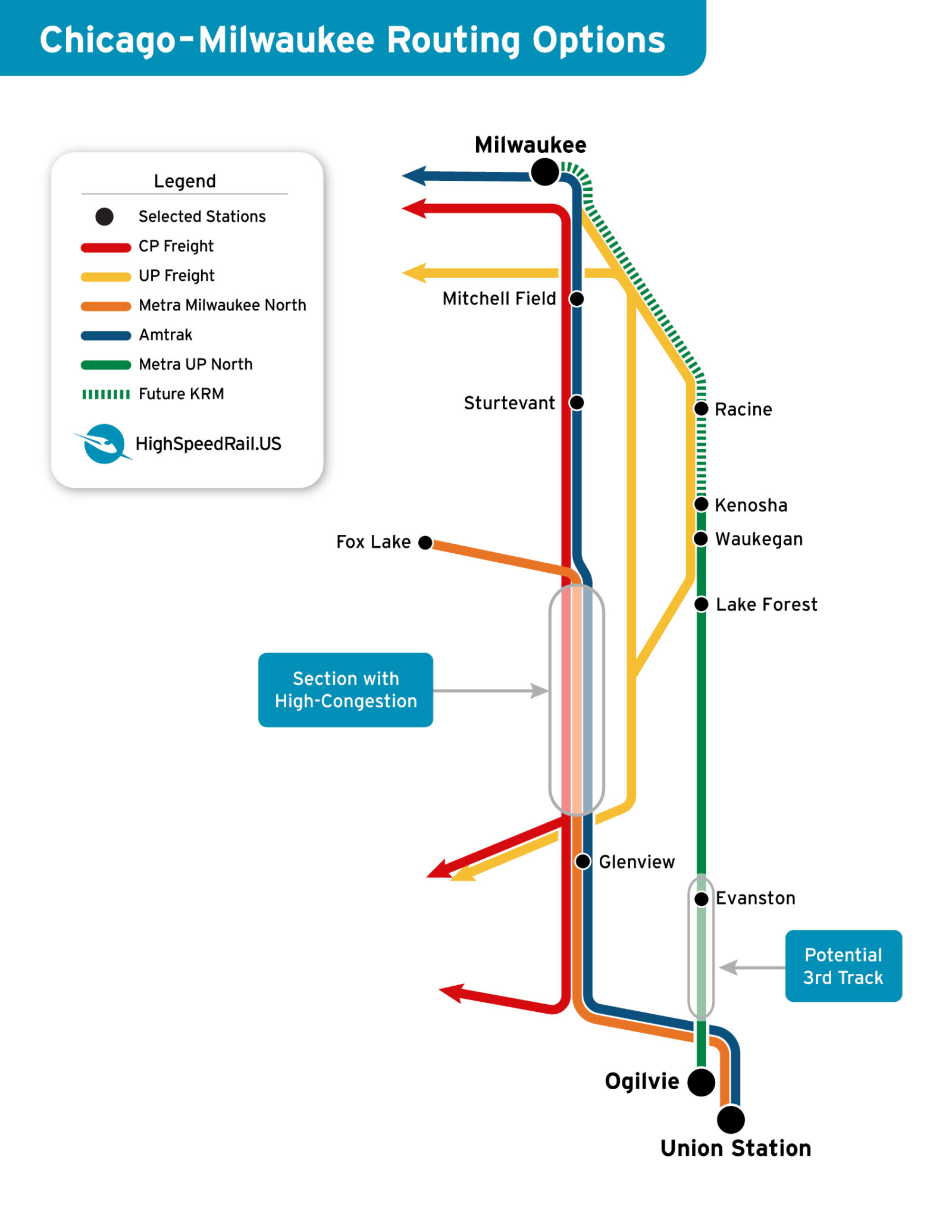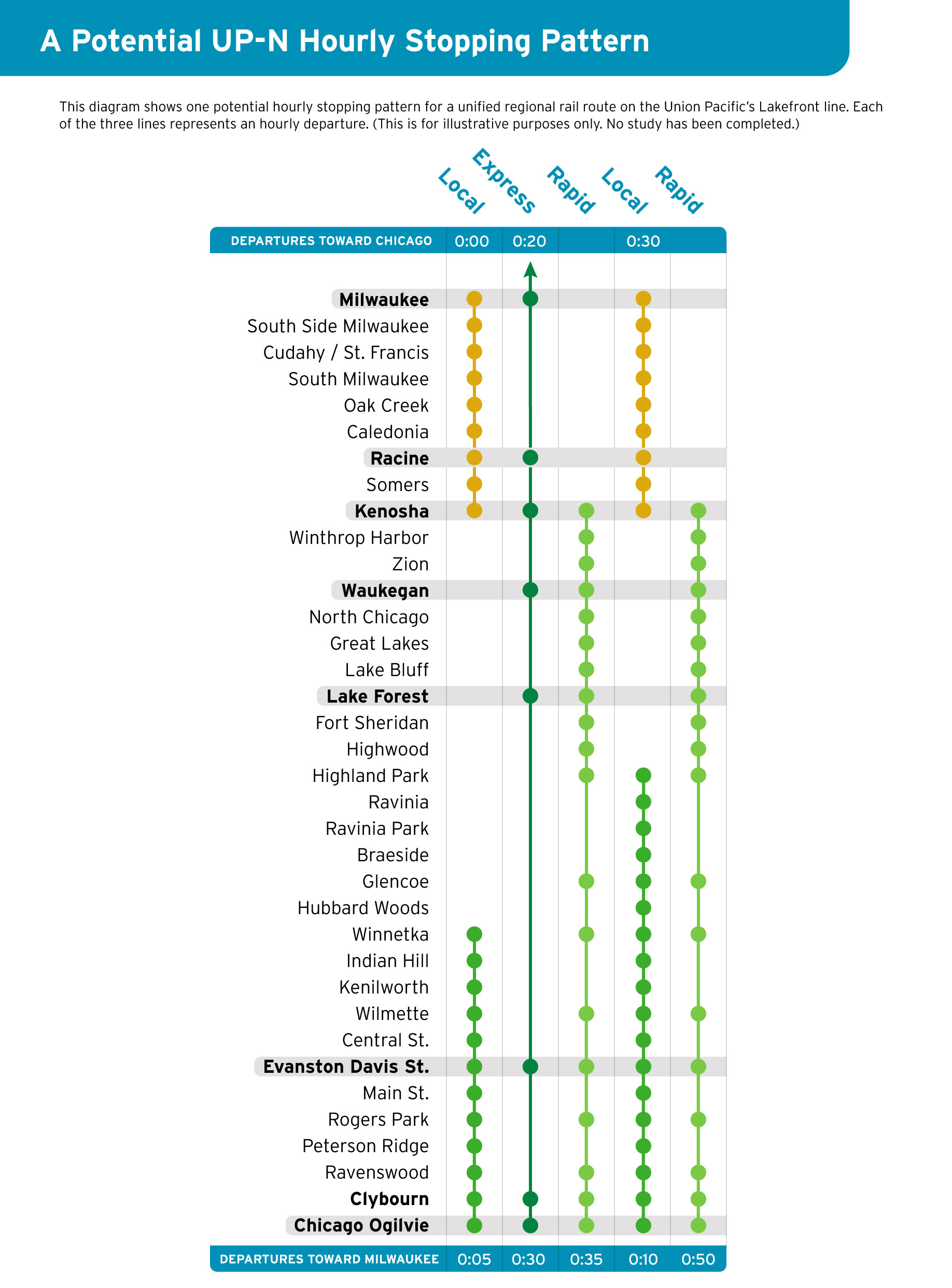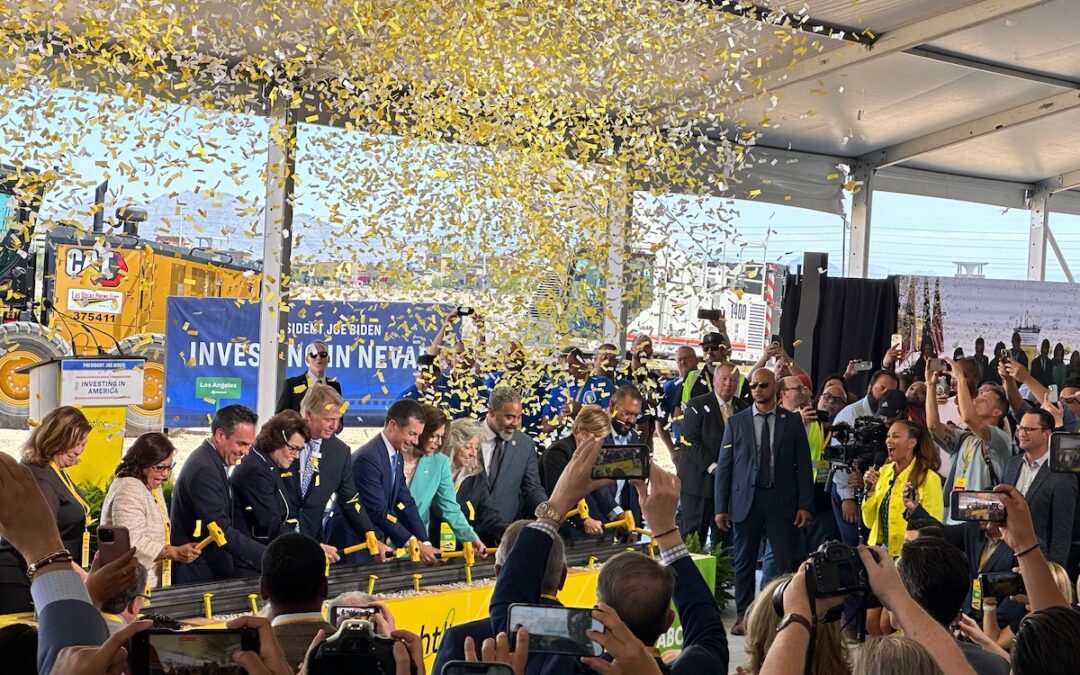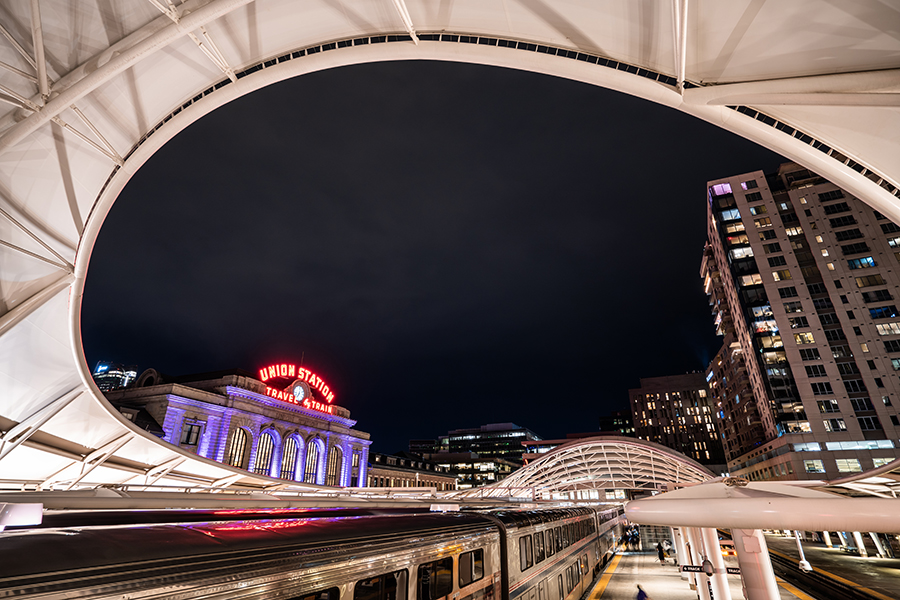The railroad Brightline today broke ground in Nevada on its new Brightline West project. Brightline will use trains traveling up to 200 miles per hour to cut the travel time between Las Vegas and Los Angeles in half. The company already operates successful trains...
Aiming for hourly-plus departures linking Chicago and Milwaukee.
Thanks to Corridor ID funding from the Federal Railroad Administration, the Wisconsin Department of Transportation is initiating planning that will set the stage for service over the next decade or two. It is urgent that local elected and business leaders advocate for at least hourly departures linking Chicago and Milwaukee.
Currently with just seven roundtrips daily, the Hiawatha is already the most popular state-supported Amtrak route in the Midwest. Hourly trains trains will bring Chicago and Milwaukee closer together, strengthen the economic and social ties between them, and help revitalize both city centers.
This corridor also provides a foundation for building regional rail to Green Bay, Madison, and many other cities. All of this proposed new service will share a hub in Chicago.
In the mid-1990s, Wisconsin and Illinois set a goal of 14 daily roundtrips, which is close to hourly. The Federal Railroad Administration’s Midwest Regional Rail Plan calls for 24 daily roundtrips.
But heavy freight traffic on the existing route makes getting beyond the current seven daily departures a big challenge. Even the current goal of 10 daily roundtrips has been difficult to achieve, because of substantial congestion between Techny and Roundout on the existing route, as well as determined local opposition to the capital improvements necessary to achieve this goal.
The inclusion of Chicago-Milwaukee service in the new federal Corridor ID program offers an opportunity to rethink the future of this critical corridor.
The Wisconsin Department of Transportation will complete Step 1 of the program this year, which sets the stage for everything to come by laying out the parameters of what will be formally studied.
Local leaders should insist that multiple agencies work together to plan the Hiawatha, KRM service (Kenosha-Racine-Milwaukee), and UP-North as complementary lines in a single corridor. Doing so will make the goal of hourly+ Chicago-Milwaukee service a real possibility.
To be clear: Upgrades and expansions on the Hiawatha line should still move forward. In fact, every effort should be made to offer 10 daily roundtrips, as the current plan envisions.
Here’s the value of bringing the UP-North into the picture:
- Almost no freight traffic. There are no freight trains south of Lake Bluff, and there are just one or two, daily, north of Lake Bluff.
- Stations in the Kenosha and Racine city centers will create synergies between these cities’ downtowns—and channel more passengers onto the trains.
- Downtown stations in Evanston, Lake Forest, and Waukegan will provide additional traffic and connections to Metra’s local trains.
- Metra’s six daily Chicago-Kenosha roundtrips provide a strong foundation for this expansion.
- At one time, limited-stop trains made this trip in 75 minutes.
Joint ticketing, unified departure boards at Union Station and Ogilvie in Chicago, and integrated schedules would be needed to make it look seamless to passengers.
A potential stopping pattern
Metra’s UP North schedule would have to be re-arranged to include Chicago-Milwaukee express trains.The following diagram shows one potential off-peak stopping pattern. Milwaukee focused trains are represented in yellow. Chicago-focused trains are in green. Each of the three lines represents an hourly departure. (This is for illustrative purposes only. No study has been completed.)
To make it happen, several challenges and objections must be overcome, including:
- UP-North trains use Ogilvie Transportation Center rather than Union Station. This objection has no merit because the buildings are separated by just two blocks—i.e., a five-minute walk. They’re actually closer than United’s B and C concourses at O’Hare. In truth, they should be connected by a direct, enclosed walkway, and the train boards should be integrated—so that they operate as one station. New foot traffic from a popular Metra Chicago-Milwaukee line will help incentivize those upgrades.
- The track north of Kenosha needs substantial upgrades, including double-tracking or extensive sidings. In 2022, Racine was awarded $5 million to study a KRM commuter line. Creating a unified plan will help leverage the full value of this asset and justify the investments in track repairs and upgrades.
- FTA and FRA projects are governed by different policies/requirements. This is a real hurdle—but hardly an insurmountable one. WisDOT already has experience with combining the two funding streams, as a result of rebuilding the Milwaukee station.
- The UP-North does not serve Milwaukee’s airport. That’s one of the key reasons the existing route should be expanded.
- The UP-North is very busy south of Wilmette, so express trains will be stuck behind other traffic. Ultimately, a third track is needed between Wilmette and Clybourn. Fortunately, the bridge replacements in that stretch were designed to accommodate it. So it will be vastly easier to add a third track here than in the chokepoint between Techny and Roundout on the Hiawatha line.
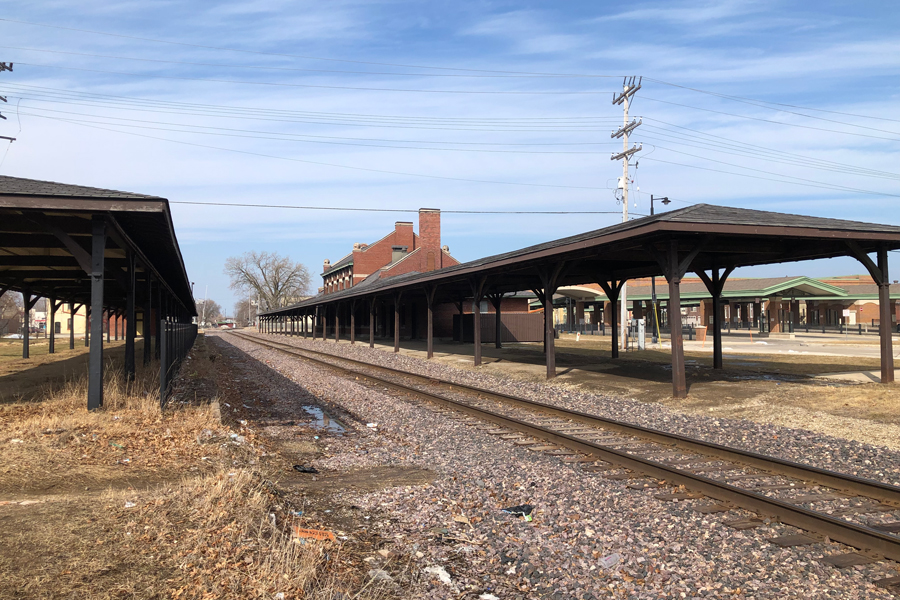
Racine built its transit center next to the historic railroad station in anticipation of regional rail.
What needs to happen now
Success will depend on the buy-in of civic and business leaders in communities that will benefit from frequent Chicago-Milwaukee train service. For example, community leaders in Bloomington-Normal, Illinois rallied around reinventing and revitalizing their downtowns with a new train station and upgraded Amtrak service. For details on how they did it—and the difference it’s making—see the Alliance’s story about Normal and our interview with Mayor Chris Koos.
First, civic leaders who care about the Chicago-Milwaukee corridor need to keep up pressure on the Illinois Department of Transportation and WisDOT, underscoring that we need to take a big-picture approach. This is a timely issue as the states frame the project over the next year. As noted, maximizing the value of the Hiawatha and the UP-North lines will mean conceiving of them of as complementary services within a single corridor.
Second, community leaders need to engage with policymakers in the Illinois General Assembly, who will make key decisions about the future of passenger rail in early 2025. The Alliance and other rail advocates are pushing for the Assembly to create a State Railway Program. Pressure now will help ensure that the program is created and robustly funded—and that establishing hourly service between Chicago and Milwaukee is recognized as a top priority.
The Latest from HSRA
Our Latest Blog Posts
Check out the latest news, updates, and high-speed rail insights from our blog!
